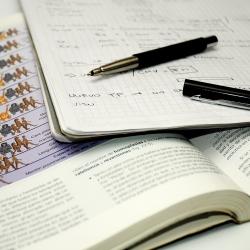How to Use a Planner for Better Time Management in School
Students often juggle multiple responsibilities, ranging from academic assignments and extracurricular activities to part-time jobs and social commitments. With so much on their plates, effective time management becomes crucial. One of the most powerful tools at a student's disposal for managing their time efficiently is a planner. Whether it's a digital app or a traditional paper planner, this tool can help students organize their schedules, set priorities, and achieve their academic goals. This article will explore how to use a planner effectively to boost time management skills in school.
- Choosing the Right Planner
The first step in utilizing a planner effectively is choosing the right one that fits your needs and lifestyle. There are various options available, including:
-
Paper Planners: Ideal for students who prefer writing things down. Look for planners with weekly and monthly views, ample writing space, and sections for notes and to-do lists.
-
Digital Planners: Apps like Google Calendar, Microsoft Outlook, or specialized apps like Todoist and Trello offer flexibility, reminders, and synchronization across devices.
Consider your preferences, whether you enjoy the tactile feel of paper or the convenience of digital tools, and choose accordingly.
- Setting Up Your Planner
Once you've selected a planner, invest some time in setting it up effectively:
-
Academic Calendar: Begin by adding important academic dates, such as the start and end of each term, exam periods, and assignment deadlines.
-
Weekly and Daily Layouts: Use weekly layouts to plan major tasks and daily layouts for detailed scheduling. This hierarchy ensures that you stay on top of both long-term goals and daily tasks.
-
Color-Coding: Use color codes to differentiate between subjects, extracurricular activities, and personal commitments. This visual distinction makes it easier to glance at your planner and understand your schedule quickly.
- Prioritizing Tasks
A planner is not just a place to jot down tasks; it's a tool for prioritization.
-
The Eisenhower Box: This method involves categorizing tasks into four quadrants based on urgency and importance. Focus first on tasks that are both urgent and important.
-
ABC Method: Rank tasks as A (most important), B (important but not urgent), and C (neither urgent nor important). Tackle 'A' tasks first to ensure that high-priority activities are completed on time.
- Creating a Routine
Consistency is key to effective time management. Use your planner to establish and maintain a routine:
-
Daily Check-Ins: Spend a few minutes each morning and evening to review your planner. This practice keeps you aware of upcoming tasks and helps you adjust priorities if needed.
-
Weekly Planning Sessions: Dedicate time each week to plan the upcoming days. Use this session to assess your progress, set goals, and adjust your schedule as necessary.
- Incorporating Flexibility
While planners are excellent for organization, life can be unpredictable. It's important to maintain flexibility:
-
Buffer Time: Schedule buffer or free time in your day to account for unexpected events or to catch up on tasks.
-
Adapting Plans: If plans change, don't hesitate to adjust your planner. This adaptability ensures that you remain productive without feeling overwhelmed.
- Evaluating Your Productivity
Regularly assess how well you are utilizing your planner:
-
Reflection: At the end of each week, reflect on what worked well and what didn't. This reflection can help you improve your planning and time management skills.
-
Tracking Progress: Use your planner to track your academic achievements and personal growth. Seeing progress can motivate you to stay organized and continue using your planner effectively.
Conclusion
A planner is more than just a scheduling tool; it's a gateway to mastering time management in school. By choosing the right planner, setting it up effectively, prioritizing tasks, establishing routines, incorporating flexibility, and evaluating your productivity, students can enhance their organizational skills and reduce stress. With these strategies, a planner can become an invaluable asset in navigating the complexities of academic life and achieving success.






















